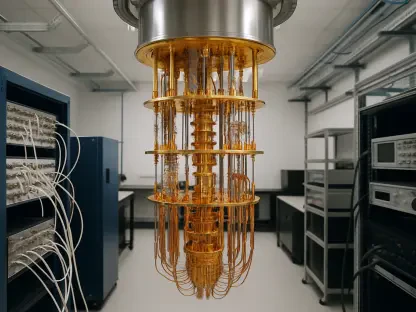In the ever-evolving field of neuroscience, the ability to observe and interpret the intricate dance of intracellular calcium dynamics offers profound insights into fundamental processes such as neurotransmission, muscle contraction, and signal transduction. Calcium imaging has emerged as a cornerstone technique, allowing researchers to visualize these fluctuations in living cells and tissues, thereby shedding light on cellular activity and communication networks. However, the sheer volume and complexity of data generated from such imaging present formidable challenges. Many existing tools focus primarily on extracting calcium traces from raw data, leaving a significant gap in downstream analysis capabilities. Custom scripts or general-purpose software often fall short, lacking the specialized workflows needed to dissect the functional connectivity and topological intricacies of neuronal networks. Enter CalciumNetExploreR (CNER), an innovative R package designed to bridge this gap by providing a streamlined, user-friendly platform for analyzing calcium imaging time-series data. By integrating essential analytical steps into a cohesive pipeline, CNER empowers neuroscientists to explore network dynamics with minimal coding expertise, leveraging the open-source environment of R to ensure accessibility across diverse research communities. This tool not only standardizes complex processes but also enhances the ability to derive meaningful biological insights from vast datasets, marking a significant advancement in the field.
1. Addressing Analytical Challenges in Calcium Imaging
The analysis of calcium imaging data is often a daunting task due to the large datasets involved and the intricate nature of neuronal interactions, which can make the process seem overwhelming to many researchers. Frequently, they grapple with the need to preprocess data, perform statistical analyses, and construct networks to uncover underlying biological phenomena. Traditional tools, while effective for initial data extraction, rarely offer integrated solutions for downstream processing, forcing scientists to rely on fragmented approaches that demand substantial programming skills. This fragmented landscape can hinder the pace of discovery, as the lack of tailored software for network analysis leaves many resorting to makeshift solutions that may not fully address the unique needs of calcium imaging data. The absence of standardized methods for measuring network clustering, efficiency, and other topological properties further complicates the process, often resulting in inconsistent or incomplete interpretations of cellular dynamics.
CalciumNetExploreR (CNER) emerges as a pivotal solution to these challenges, specifically targeting the downstream analysis of pre-extracted calcium traces. Built within the open-source R environment, CNER offers a comprehensive suite of tools that streamline data preprocessing, network construction, and visualization into a single pipeline. This integration reduces the dependency on multiple disparate tools, minimizing the technical barriers that researchers face. By focusing on functional connectivity and network topology, CNER enables a deeper understanding of how neuronal populations interact, providing a robust framework for both experimental and computational neuroscientists. Its design prioritizes ease of use, ensuring that even those with limited coding experience can harness powerful statistical and graphical analyses to explore complex biological systems effectively.
2. Core Objectives and Scope of CNER
The primary goal of CalciumNetExploreR (CNER) is to provide a seamless platform for analyzing functional connectivity within neuronal networks derived from calcium imaging data. This R package is crafted to empower researchers by simplifying the intricate process of network analysis, making it accessible to a broad spectrum of users in the neuroscience community. Unlike general-purpose software that requires extensive customization, CNER is tailored to handle the specific nuances of time-series data from neuronal populations. Its objective is to facilitate the extraction of meaningful insights into how cells communicate and organize, thereby advancing the understanding of dynamic behaviors in biological systems. This focus on usability ensures that complex analyses are within reach, fostering innovation without the burden of steep learning curves.
Beyond its user-friendly approach, the scope of CNER extends to a wide array of recording techniques and experimental setups, emphasizing downstream analysis of pre-extracted calcium traces. The package integrates various analytical components—ranging from data normalization to advanced network metrics—into a unified workflow. This allows for a detailed exploration of network topology, revealing patterns of connectivity and functional modules that might otherwise remain obscured. By offering tools for statistical evaluation and graphical representation, CNER supports researchers in uncovering the organizational principles of neuronal networks. Its versatility makes it a valuable asset across diverse research contexts, ensuring that insights into cellular interactions are both comprehensive and actionable for studies spanning development, disease, and learning processes.
3. Data Preprocessing Capabilities
A critical step in analyzing calcium imaging data is preprocessing, which ensures that raw signals are comparable across different cells and experimental conditions. CalciumNetExploreR (CNER) tackles this with robust tools for signal standardization, employing min-max scaling to normalize raw calcium signals for each cell individually. This method adjusts the data to a common range, mitigating variations due to differing baseline levels of calcium indicators among cells. Such normalization is vital for accurate comparisons, particularly when dealing with heterogeneous cell populations or diverse experimental setups. By scaling signals to a uniform range, CNER enhances the interpretability of the data, setting a solid foundation for subsequent analyses while remaining mindful of potential influences from outliers that could skew results.
Following normalization, CNER offers a binarization process to convert continuous signals into discrete active or inactive states, a crucial step for noise reduction and improved downstream analysis. The binarize function within the package is highly flexible, allowing users to define custom thresholds tailored to specific experimental needs. By default, a cell is considered active if its normalized signal exceeds two standard deviations above the mean, effectively highlighting significant calcium events against baseline activity. This approach is particularly beneficial in low signal-to-noise environments, as it suppresses minor fluctuations and emphasizes meaningful patterns. Binarization facilitates the identification of spontaneous or evoked transients, providing a clearer picture of neuronal activity that can be further explored through network construction and other analytical methods.
4. Population Activity Analysis Features
Understanding the collective behavior of neuronal populations is essential for deciphering network dynamics, and CalciumNetExploreR (CNER) excels in this domain through its population activity analysis tools. One key feature is the calculation of the proportion of active cells over time, derived by summing binarized signals across all cells at each time point and dividing by the total number of cells. This metric offers valuable insights into overall network activity, revealing synchronized patterns that might indicate coordinated cellular responses. Such information is critical for identifying periods of heightened activity or quiescence, which can be linked to specific physiological processes or experimental stimuli, thereby enhancing the understanding of how neuronal ensembles function as a cohesive unit.
Additionally, CNER employs hierarchical clustering to detect potential clusters of calcium activity patterns among cells, using Ward’s method as the default approach. This technique prioritizes compact and homogeneous clusters, though users are encouraged to select alternative linkage methods like “complete” or “average” to explore different structural assumptions based on their data. Hierarchical clustering helps uncover subgroups of cells with similar activity profiles, shedding light on potential functional modules within the network. This customizable feature ensures that researchers can adapt the analysis to the unique characteristics of their datasets, providing a nuanced view of how activity patterns are distributed across the neuronal population and facilitating deeper investigations into coordinated behaviors.
5. Network Creation and Analytical Tools
The construction of functional networks from calcium imaging data is a cornerstone of CalciumNetExploreR (CNER), which assesses connectivity through pairwise cross-correlation of normalized calcium signals. This method evaluates the strength of relationships between cells, incorporating user-defined time lags to account for short delays in cellular responses. By default, lags of -1, 0, and +1 time points are considered, but customization options allow for adjustments based on specific research needs. The maximum absolute correlation value across these lags is selected as the measure of functional connectivity, providing a robust basis for understanding how cells interact within the network and capturing the temporal nuances of their communication.
From this connectivity matrix, CNER builds an undirected weighted graph where nodes represent cells and edges signify significant functional connections, with weights determined by correlation values. A user-defined threshold is applied to filter out weaker connections, focusing analysis on the most meaningful interactions. This graph construction is pivotal for visualizing the network’s structure and serves as the foundation for further topological analysis. By transforming raw data into a structured network, CNER enables researchers to explore the underlying architecture of neuronal interactions, identifying key connections that drive collective behavior.
Beyond graph creation, CNER computes a range of topological metrics to characterize network structure, including degree (number of connections per node), clustering coefficient (tendency to form clusters), global efficiency (information exchange efficiency), mean degree, and community detection via the leading eigenvector method. These metrics provide a comprehensive overview of the network’s organization, revealing patterns of local and global connectivity. For instance, a high clustering coefficient might indicate tightly knit functional groups, while global efficiency reflects the network’s capacity for rapid information transfer. Such insights are invaluable for understanding the functional organization of neuronal populations and how they adapt under different conditions.
6. Subset Network Analysis for Targeted Insights
CalciumNetExploreR (CNER) offers a powerful feature for subset network analysis, allowing researchers to focus on specific groups of cells defined by criteria such as anatomical location, functional characteristics, or genetic markers. This capability is essential for studying the roles of distinct subpopulations within the broader neuronal network. By isolating these subsets, users can construct functional networks specific to the selected cells using the same correlation-based methods applied to the main network. This targeted approach enables a detailed examination of how particular cell groups operate independently, providing a clearer picture of their unique contributions to overall network dynamics.
Moreover, CNER facilitates a comparative analysis by calculating the topological properties of subset networks and assessing their interactions with the main network. Connections between subset cells and those outside the subset are analyzed to understand how these groups influence or are influenced by the larger cellular community. This dual perspective is particularly useful in experiments where certain cells are labeled differently or exposed to specific stimuli, as it highlights localized changes and their impact on global network function. Such insights are critical for research into disease models, developmental processes, or learning mechanisms, where specific cell populations often play pivotal roles in shaping network behavior.
7. Advanced Analytical Techniques
To delve deeper into the complexities of calcium imaging data, CalciumNetExploreR (CNER) incorporates advanced analytical methods such as Principal Component Analysis (PCA). This technique reduces the dimensionality of normalized calcium signals, identifying principal components that capture the most variance in the data. Scree plots are generated to visualize the contribution of each component, aiding in the selection of those most relevant for further analysis. PCA helps uncover underlying patterns in neuronal activity, simplifying the interpretation of high-dimensional datasets and revealing dominant trends that might correspond to specific biological processes or experimental conditions.
Another sophisticated tool within CNER is Power Spectral Density (PSD) analysis, which examines the frequency content of calcium signals using the Welch method. This analysis identifies dominant frequencies and oscillatory patterns within the data, offering insights into periodic behaviors and synchronization phenomena across the cellular population. PSD plots display power as a function of frequency, enabling researchers to detect rhythmic activities that could be indicative of coordinated network functions. By providing a window into the temporal dynamics of neuronal activity, PSD analysis complements spatial network metrics, enriching the overall understanding of how neuronal populations operate over time.
8. Integrated Workflow for Streamlined Analysis
CalciumNetExploreR (CNER) features an integrated analysis pipeline through its pipeline() function, automating a comprehensive workflow with minimal user intervention. The steps include: 1. Data Input, loading time-series data and cell coordinates provided by the user; 2. Signal Processing, applying normalization and binarization as described; 3. Activity Mapping, visualizing population activity over time with clustering options; 4. Network Development, building and visualizing functional networks using cross-correlation coefficients and spatial coordinates; 5. Metric Computation, calculating key network metrics like degree distribution, clustering, efficiency, and community detection; 6. Subset Examination, analyzing selected cell subsets by replicating network and metric analyses; 7. Detailed Analytics, conducting PCA and PSD analyses with visual outputs like scree plots and PSD graphs; 8. Result Compilation, summarizing findings in tables and comprehensive visualizations for easy interpretation. This structured approach enhances reproducibility by encapsulating the entire process into a single, customizable command.
The automation of these sequential steps significantly reduces the analytical burden on researchers, ensuring consistency across repeated executions without reliance on random initialization. Each stage of the pipeline is designed to flow seamlessly into the next, providing a holistic view of neuronal network properties from raw data to interpretable results. Customization options within the pipeline allow users to tailor parameters to specific research needs, maintaining flexibility while preserving efficiency. This integrated workflow stands as a testament to CNER’s commitment to simplifying complex analyses, enabling scientists to focus on deriving biological insights rather than navigating technical complexities.
9. Software Specifications and Requirements
CalciumNetExploreR (CNER) is developed using R (version 4.4.0), a widely recognized open-source environment for statistical computing and graphics, ensuring accessibility to a global research community. The package, along with detailed documentation and usage examples, is hosted on GitHub, facilitating easy installation and updates. This open-source nature not only lowers financial barriers but also fosters collaboration and extension of functionalities through R’s extensive ecosystem of packages. Such a foundation guarantees that CNER remains a dynamic tool, capable of evolving with the needs of neuroscience research through community contributions and support.
In terms of data requirements, CNER necessitates properly formatted inputs to perform its analyses effectively. Time-series data must be provided as a matrix or data frame where rows represent individual cells and columns denote time points, capturing raw or pre-processed calcium signals. Additionally, a matrix of cell coordinates (X and Y positions) is required for spatial analyses and network visualization, ensuring alignment with the time-series data. Optional subset labels can be included as a categorical column in the coordinates data frame, enabling targeted analyses of specific cell groups. These structured requirements ensure that CNER can process data accurately, delivering reliable insights into neuronal network dynamics.
Visualization within CNER leverages established tools alongside package-specific functions to present results clearly. While external software like ImageJ/Fiji and R’s ggplot2 package are utilized for certain images and plots, CNER’s built-in visualization functions are integral to the pipeline, generating network graphs and activity plots directly. This combination of external and internal tools ensures that outputs are both comprehensive and accessible, catering to a range of analytical and presentation needs. By adhering to these specifications, CNER maintains a high standard of usability, supporting researchers in translating complex data into actionable scientific knowledge.
10. Application in Experimental Contexts
The practical utility of CalciumNetExploreR (CNER) is vividly demonstrated through its application in experimental studies involving zebrafish larvae, a common model in neuroscience research. These studies focused on calcium imaging of neuronal activity under two distinct conditions: a control group and a treatment group with AKT1 overexpression, known to influence calcium levels. Live imaging setups targeted specific brain regions such as the hindbrain and contralateral tectum, capturing time-series data over extended periods. These datasets provided a rich foundation for testing CNER’s capabilities, showcasing how the package can handle real-world biological data to uncover network dynamics across different experimental manipulations.
Analysis using CNER revealed striking differences in network features between the control and treatment conditions, underscoring the package’s ability to detect subtle changes in neuronal behavior. Metrics such as event frequency, clustering coefficient, and global efficiency showed significant variations, with the treatment group exhibiting reduced network integration and efficiency. Additionally, subset analyses of labeled neurons highlighted altered connectivity patterns and heightened activity under treatment, offering insights into how specific cell populations respond to genetic modifications. These findings illustrate CNER’s strength in dissecting complex network interactions, providing a detailed view of how experimental interventions impact neuronal communication.
Further demonstrating its versatility, CNER was applied to an independent dataset from a different zebrafish line, confirming the pipeline’s generalizability across varied experimental conditions. The results consistently yielded biologically relevant metrics, such as moderate clustering coefficients and structured variance patterns via PCA, affirming the tool’s reliability. This broad applicability ensures that CNER is not limited to specific contexts but can support diverse research questions, from developmental biology to disease modeling, by delivering consistent and interpretable outcomes that advance the understanding of neuronal networks.
11. Discussion on Utility and Future Potential
CalciumNetExploreR (CNER) stands out as a transformative tool in neuroscience by effectively streamlining the analysis of calcium imaging data, a process often fraught with complexity. Its ability to integrate multiple analytical steps—from preprocessing to advanced network metrics—into a single pipeline allows researchers to uncover critical differences in network topology and function with unprecedented ease. Application to datasets like those from zebrafish studies has demonstrated how CNER can reveal significant alterations in clustering, efficiency, and connectivity under experimental conditions. This utility extends beyond mere data processing, enabling a deeper exploration of neuronal dynamics that can inform hypotheses about cellular communication and organization in various biological contexts.
Despite its strengths, CNER is not without limitations, notably the requirement for basic proficiency in R programming, which may pose a barrier to some users. However, efforts are underway to develop a graphical user interface (GUI) to enhance accessibility, ensuring that a wider audience can benefit from its capabilities. The modular design of CNER, coupled with compatibility with other R packages like igraph and ggplot2, offers significant advantages for customization and integration into existing workflows. This adaptability positions CNER as a flexible tool that can evolve alongside emerging analytical needs, supporting researchers in tailoring analyses to specific experimental designs or research objectives.
Looking ahead, the potential for CNER to incorporate additional features such as baseline correction in preprocessing and advanced machine learning tools holds promise for further enriching its analytical scope. These developments could address current gaps and provide even more comprehensive insights into neuronal networks. The ongoing commitment to enhancing functionality reflects a forward-thinking approach, aiming to keep CNER at the forefront of neuroscience research tools. As these enhancements unfold, the package is poised to play an increasingly vital role in unraveling the complexities of cellular interactions, fostering advancements across a spectrum of scientific inquiries.
12. Reflecting on Impact and Next Steps
Looking back, CalciumNetExploreR (CNER) proved to be a robust and versatile asset for neuroscience research, adeptly simplifying the intricate analysis of calcium imaging data. Its unified pipeline streamlined complex processes, from data normalization to network visualization, and delivered actionable insights into neuronal dynamics. Applications to experimental datasets, such as those involving zebrafish under varying conditions, showcased how CNER pinpointed significant network differences, aiding in the understanding of functional architectures. This capability underscored the package’s role in reducing analytical barriers, allowing researchers to focus on scientific discovery rather than technical hurdles.
Moving forward, the next steps for CNER involve expanding its reach and functionality to meet evolving research demands while ensuring it remains accessible to a wider audience. Developing a user-friendly graphical interface remains a priority to accommodate those less familiar with programming, ensuring broader adoption. Additionally, integrating advanced features like machine learning algorithms and enhanced preprocessing options could further deepen analytical insights. Encouraging community feedback and collaboration through its open-source platform will be crucial for continuous improvement. By pursuing these enhancements, CNER aims to solidify its position as an indispensable tool, paving the way for future breakthroughs in understanding the intricate workings of neuronal networks across diverse scientific explorations.









